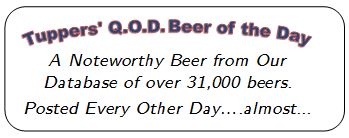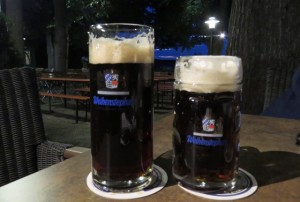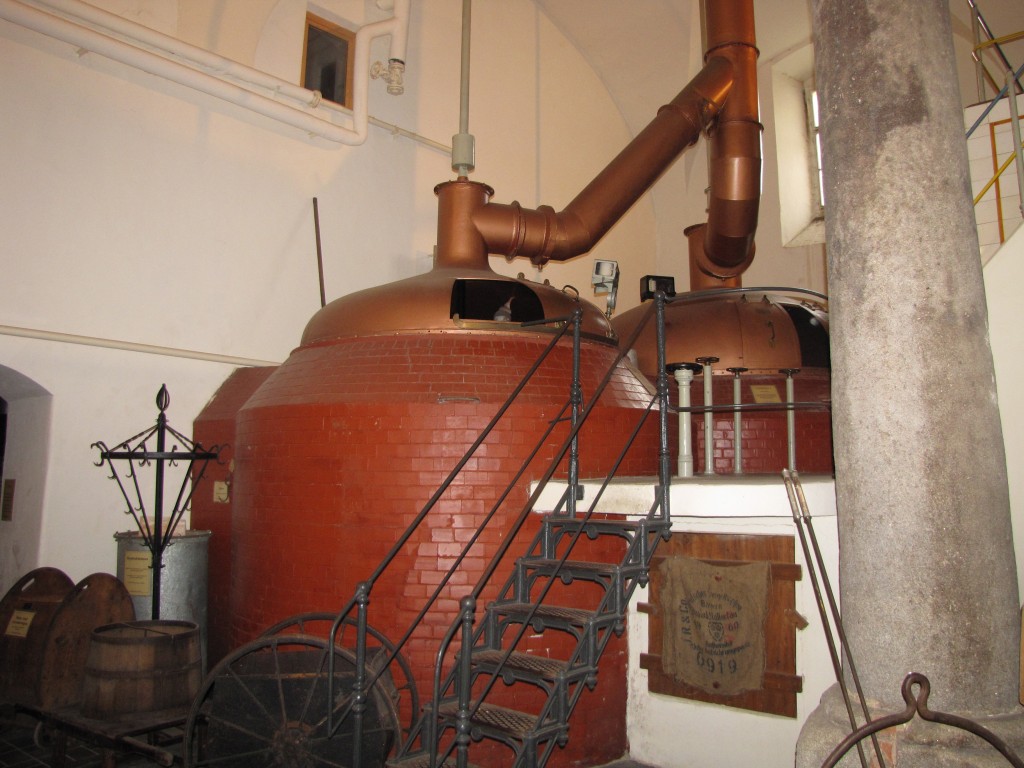
WEIHENSTEPHANER’S KORBINIAN DOPPELBOCK: A SEASONAL FOR ALL SEASONS
7.4 Abv 32 IBUs
Weihenstephan is today owned by the state of Bavaria, but that’s a relatively recent development. For about 800 Weihenstephan was a monastery brewery, but in 1803 under the influence of the conquering Napoleon, it was one of a myriad of monasteries dissolved and by the time the Kingdom of Bavaria had emerged in 1806 it was a possession of the state of Bavaria. It has remained in Bavarian hands, more or less, ever since.

Although best known for its Hefeweizen, Weihenstephan also makes some excellent dark beers.
>>>Brewers are aware of the monastic origins of the brewery, though. We visited a small, now defunct brewery about a decade ago. We talked to the engaging, and aging, brewer and owner who was remarkably candid with us. His beers were very good, brewed with house yeast that had been in the family for years, and they were all the better for the warm welcome we received. But he acknowledged that he couldn’t match the quality and depth of flavors of Weihenstephan’s brews. “Ah” he said, looking up, “they have a direct connection with a higher power. It’s not really a fair competition.”
>>>This beautiful doppelbock has some earlier lineage. The first bock beers originated in Einbeck, well north of Munich, but were brought by the Duke of Bavaria to Freising (presumably so he’s have fresher beer.) Bocks, therefore, had been brewed in Freising for five or six centuries.
>>>Most historians agree that the the dark version of the style we call doppelbock originated with the Paulaner Abbey’s Salvator Developed by monks for their own use at least by the 18th century, it’s first legal commercial production was in 1780. Other breweries couldn’t use the name “Salvator” so they copied just the suffix and slapped it on all sorts of verbs. “Suffixator” is easy to translate. Sixpoint’s “Emasculator” is enough to make you stop and think. These beers have become so popular that some breweries have begun to produce them year round. You can get a perfectly poured Salvator at Paulaner’s Bierhall and Garden on Nockerberg (the former site of the brewery.) and Korbinian can be found in stores “off season.”
>>>We haven’t been able to find out exactly when Weihenstephan started using “Korbinian” to brand beer. The name is from Saint Korbinian who founded the monastery in the 8th century, but we can’t find records of early use of the name as a brand. It’s interesting that it’s one of the very very few doppelbocks to resist an “ator” pun.
Tasting notes: Creamy, roasty and chewy. More chocolate than the style usually presents and vastly more chocolate than the brewery’s excellent dunkel. Ends with a hint of toffee, some chalkiness in the mouth feel and continuing soft chocolate. Well balanced, strong, and dangerously moreish.
Food Pairings: Big flavored dishes that can hold their own with the rich dark intensity of the style. Paulaner recommends duck with damson sauce for its Salvator. Weihenstephan recommends smoked meat and fish as well as venison and poultry for its Korbinian. We think you could do worse than a good wurst. Beer Review # 0117 201709
NEXT WE’LL FEATURE ONE MORE GEM FROM WEIHENSTEPHAN BEFORE CROSSING TOWN FOR BEERS OF HOFBRAUHAUS FREISING [Weihenstephan on 9-14 HB Freising starts 9-16]



Leave a Reply